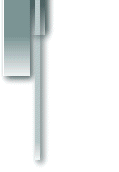
Our last lesson was a basic dictionary on Ethnic Rhythms. As I mentioned earlier, none of these rhythms is intended to "stand alone." They work with each other to create a whole, if you will.
This lesson will explain how that works. I will be showing how some of the basic rhythms come together to create an Iberian-Cuban rhythm called the Rhumba.
![]()
![]()
The Rhumba consists of 8 different instruments, each playing a seperate "rhythm," pulled from the last lesson. We've added the drumset on the bottom. You will find these eight instruments "stacked" in this notation. They are all played at the same time, creating the basic Rhumba.
The instruments we will use are: clave, maracas, cowbell, guiro, bongos, conga, timbales, and drum set. There are some specific instructions for a couple of these, which I will note below.
![]()
![]()
Clave

This is the foundational rhythm of most latin music.
Maracas

These are played with two hands in a rapid motion that creates a quick, articulated "chick" sound.
Cowbell

Note the O and X over the notes. The O indicated the cowbell is to be struck at the open end; the X indicates the closed end. Hold the cowbell in your hand with the open ened away from you - strike it with the butt end of a drumstick.
Guiro

Hold the guiro like the cowbell - use a thin stick (usually provided). The lines above the notes indicate the stroke you use: the long line is the slow, downward scraping over the ridges. This is generally done away from you. The dots indicate a light, tapping on the ridges. This is done towards you, which sets up the scraper for the next long stroke. It's like this: "scrrrrrrape" (away), "tap", "tap", (towards). This is a very cool-sounding rhythm, and you can use it in lots of music!
Bongos

The pattern we are playing here is called the "Martillo." Memorize it - your band leader may just call it out to you some day and you'd better know it!
Let's break this down. The bongos are held with the small drum on the left. Here's how the rhythm is played:

Pay close attention to the hand "sticking." The numbers above the notes indicate how you strike the drum:
- LH thumb presses head, RH fingers strike head near rim.
- LH fingers strike near center.
- RH fingers strike near center.
- LH thumb strikes near center.
- RH fingers strike near rim.
- LH fingers strike near center.
- RH fingers on rim of large drum for a "Pop" effect.
- LH thumb strikes and remains on head for first note of next measures.
You generally won't see the "sticking" written out on the music - the "martillo" designation is all the info you will get.
Conga

This rhythm is called the "Tumbao," and is another key rhythm, like the "Martillo." Here's what the letters above the staff mean:
- LH - P - Press Stroke - hit the drum and leave the flat of your hand on the head.
- LH - H - Heel of Palm - hit the drum only with the heel of your hand.
- LH - F - Finger Tips - this is generally done with the heel still against the head.
- RH - S - Slap - with the left hand on the head, slap the head with the right hand to produce a loud, high pop. Very hard to master - some drummers will hit the very edge of the rim to get the same sound.
- RH - O - Open head - let ring (the left hand is off the drum).
Notice for this rhythm we're not playing #2, the H. So, for this rhythm, play a press stroke with the left hand (quarter note), followed by the slap, leaving the left hand on the drum (quarter note), then the fingertips of the left hand, leaving the heel of the left hand on the drum (quarter note), concluded by two open strokes witht the right hand - the left hand off the drum (eighth notes).
You might want to have a percussionist show you how to do this, especially the slap.
Timbales

This rhythm is called the "Baqueteo," and is another key latin rhythm.
Like the bongos, we have to break this down, because you generally won't find the sticking on your music:

- Right stick strikes head.
- Right stick strikes rim shot.
- Left stick strikes rim (hand remains on head).
- Right stick strikes head.
- Right stick strikes rim shot.
- Left stick strikes rim (hand remains on head)
- Right stick strikes low drum.
- Left stick strikes rim (hand remains on head)
Drum Set

The "x" on the snare drum line is a cross-stick with the left hand - the left hand remains on the head throughout the pattern, the right hand playing all other snare and tom notes.
![]()
![]()
So, add this all up and you have the Rhumba. Cool, eh? An excellent resource is the Afro-Latin Rhythm Dictionary, published by Alfred Publishing Company. Your music store should be able to get this for you. This handy, little book has tons of rhythms in it, and is required study if you want to learn more about ethnic rhythms.
As always, let me know how you've done!
![]()
![]()
![]()
